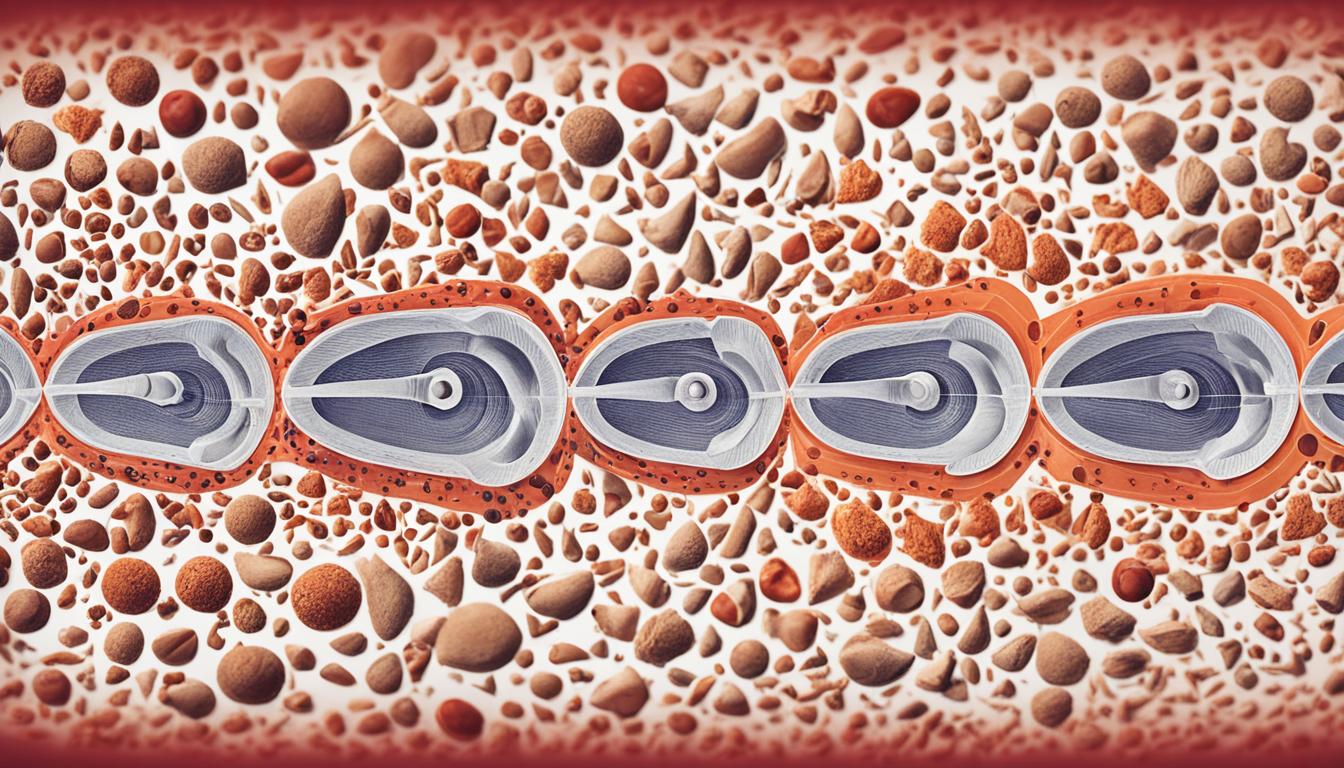Noise-related hearing loss, known as noise-induced hearing loss, affects many people. Older adults, over 65, are especially at risk. It can seriously reduce someone’s quality of life.
This type of hearing loss comes from loud sounds at work, from music, or from being in noisy places. It also happens when people are around a lot of noise for a long time.
To avoid this illness, there are things you can do. Using ear protection and being in hearing care programs can help. And there is hope in using stem cell therapy to make things better for those affected.
Key Takeaways:
- Noise-related hearing loss, also known as noise-induced hearing loss, is a prevalent condition.
- Causes of noise-related hearing loss include workplace noise exposure, exposure to loud music or recreational activities, and environmental noise pollution.
- Hearing protection devices and hearing conservation programs can help prevent and mitigate the effects of noise-induced hearing loss.
- Stem cell therapy shows promise as a potential treatment for noise-related hearing loss.
- Research and advancements in stem cell therapy may improve the quality of life for individuals affected by noise-related hearing loss.
Symptoms of Noise-Related Hearing Loss
Noise-related hearing loss shows up with various symptoms that differ in intensity. These signs hint at how bad the condition is. Common warnings of this type of loss include:
- Difficulty understanding speech in noisy environments: It might be hard to hear and get what people are saying in loud places. Think of crowded spots or streets with lots of noise.
- Ringing or buzzing in the ears (tinnitus): People often hear ringing, buzzing, or humming in their ears. This can get in the way of daily activities and bring discomfort.
- Muffled or distorted sounds: Sounds may seem like they’re coming from far away or are underwater for those with this issue.
- Increased need for others to speak loudly or repeat themselves: Those with hearing loss might ask for very loud talking or for what was said to be repeated. They struggle to catch and fully understand spoken words.
At first, noise-related hearing loss might seem like a quick loss of hearing or a drop in how well you hear after loud sounds. For some, this early loss might get better with time. But, if it’s not treated, or loud noises keep happening, the loss could become permanent.
Knowing the signs and getting medical help early is key to managing noise-related hearing loss.
Causes and Risk Factors of Noise-Related Hearing Loss
Noise-related hearing loss happens due to many reasons. It’s influenced by specific risk factors. Knowing these can help prevent and manage this problem.
Occupational Noise Exposure
Being around loud sounds at work for a long time is a leading cause. Jobs like in construction and manufacturing are noisy. People in these fields have a big risk of hearing loss.
Recreational Noise Exposure
Doing fun things with loud noise can harm your hearing, too. Things like going to concerts or using headphones at high volumes can be bad. Also, sports like shooting or using loud tools without ear protection are risky.
Genetic Predisposition
Some people may face more danger from noise even at lower levels because of their genes. Certain genetic factors make you more likely to have hearing loss from noise.
To stop noise-related hearing loss, we need to know and deal with its causes and risks. Making workplaces safer with hearing programs and using protection helps. Also, teaching safe ways for fun activities prevents this problem.
Prevention Tips
- Use hearing protection devices, like earplugs or earmuffs, in loud places.
- Take breaks in quiet areas to rest your ears from loud noises.
- Keep personal listening device volumes low and safe.
- Avoid noisy fun for long periods without ear protection.
- Think about genetic counseling or testing if your family has a history of hearing loss.
By learning about noise-related hearing loss and stopping it early, we can keep our hearing good. This helps us live well.
Stem Cell Therapy for Noise-Related Hearing Loss
Stem cell therapy is promising for treating hearing loss from loud noises. Scientists use special stem cells to make inner ear models. This helps them understand hearing loss better and find new treatments.
They are also looking at gene therapy to fix hearing loss causes. This includes different methods to edit and adjust genes. Gene therapy could really help by targeting what makes us lose our hearing.
Combining stem cells and gene therapy aims to cure noise-related hearing loss. They promise a future where we can treat this issue better. They bring hope for a better life for those it affects.

